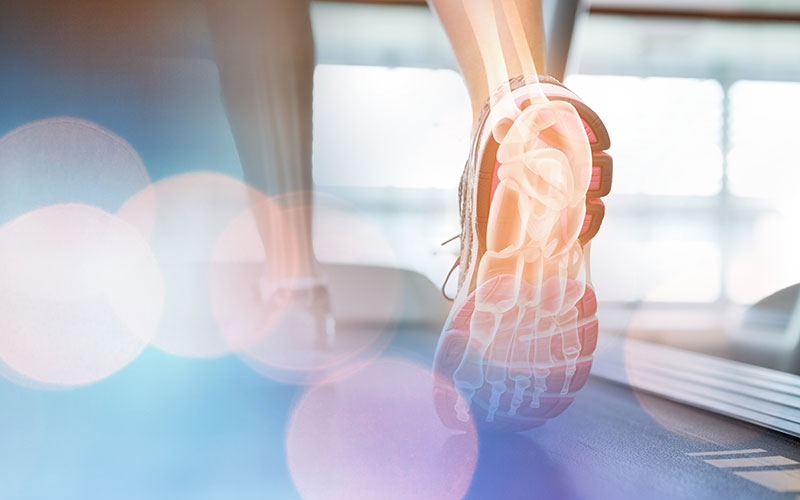
Has your child complained of pain in their feet or ankles during or after sports activity? In the past, parents and medical providers have been quick to brush these complaints off as “growing pains”. However, if your child or adolescent is experiencing pain at the posterior side of the heel bone, they may be experiencing a condition known as calcaneal apophysitis, or Sever’s Disease.
Sever’s Disease is a condition in which the growth plate (apophysis) of the heel bone becomes inflamed, typically as a result of repetitive traction forces applied through the calf musculature (gastrocnemius/soleus) and Achilles’ tendon. Prevalence is greater in those individuals participating in sports or activities involving repetitive or heavier impact loading through the lower extremities, such as soccer, basketball or gymnastics. Ages nine through fifteen are most affected, as the growth plate remains open during this time frame. Incidence of Sever’s Disease abates as the calcaneal growth plate closes.
As with most overuse injuries, early recognition and treatment is most effective with Sever’s Disease. Managed when the condition is mild in intensity, resolution and return to safe play is highly likely. Early diagnosis can be made by the health care professional through a thorough exam. Typical findings associated with calcaneal apophysitis include tenderness with palpation of the heel bone, and a positive “squeeze test”, in which the heel bone is squeezed medially and laterally by the examiner’s fingers, eliciting pain. Limited ankle dorsiflexion range of motion (ROM), or calf/Achilles’ tightness is very common in this condition, and pain is often associated with pushing up onto the toes. X-rays of this condition are generally not diagnostic, as abnormal findings are generally not seen with Sever’s Disease.
Initial treatment of this calcaneal apophysitis consists of basic methods to decrease inflammation, including frequent icing and relative rest. Primary goals of the sports physical therapist are to promote resolution of the condition, while preventing deconditioning of the athlete. With Sever’s Disease, the patient can continue to participate in core strengthening, flexibility, and limited cardiovascular activity, provided symptoms are not exacerbated. Important considerations in early treatment include increasing the length of the gastroc/soleus complex, consisting of light stretching activity, initially performed in non-weightbearing with a strap or rope, then progressed to weight-bearing calf stretching. Soft tissue mobilization of the calf musculature and Achilles’ tendon is also very important. Active Release Technique (ART) and Graston Technique are beneficial with improving tissue extensibility and promoting circulation to healing tissue. Use of shoe inserts to correct excessively pronated, or provide cushion to the high arched foot, can be beneficial. Frequently, a slight heel lift or heel cup can help by reducing tension and strain on the growth plate.
Later phases of rehabilitation, as symptoms are resolving, include strengthening and proprioceptive activities. Increased strength of the entire lower kinetic chain allow for a more efficient “shock absorption” system during sports activity. Proprioceptive and balance activities challenge the athlete to control their body in different environments (stable vs. unstable surfaces, fixed vs. dynamic movements), helping them to move more efficiently and reduce risk of re-injury.
Lastly, the sports physical therapist will guide a progressive return to sport. Rather than attempting an approach of “throwing them into the deep end”, a skilled therapist will provide guidelines that gradually increase activity and load. For example, return to soccer may involve early ball touch and handling drills, followed by return to controlled drills, prior to return to full speed scrimmage and game situations.
Managed appropriately, those suffering from Sever’s Disease can get back to the activities they enjoy. If your child or teen is experiencing heel pain with increased activity or sport, seek medical attention from your physician or physical therapist to help them back to full speed as safely and quickly as possible!

